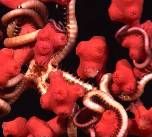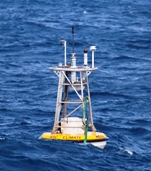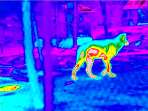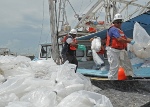Virtual library includes closure maps, wildlife reports, and mission logs by crew members.
A new methodology to assess the potential to store carbon in U.S. wetlands, forests, and rangelands ecosystems – and thus to reduce emissions of greenhouse gases to the atmosphere — will help find ways to mitigate the impacts of climate change.

New submarine volcanoes, a large hydrothermal field with a thriving exotic animal ecosystem, and areas rich with deep-sea ocean animals are among the discoveries they reported.
Twenty-four conservation projects will benefit fish and wildlife on more than 5,900 acres of coastal habitats.
The first underwater robotic vehicle to cross an ocean will be the centerpiece of a new exhibit that opened in the Sant Ocean Hall at the Smithsonian National Museum of Natural History on Dec. 9.
New criteria to protect people from potential illness will be developed by October 2012.
Kevin Vaughan did not get the necessary permits to move earth near the Missouri River in Dixon County, Neb.

Results of a five-year monitoring effort to repair seagrass damaged in a boat grounding incident suggest that restoration techniques such as replanting seagrass can speed recovery time.
Respondents called for health studies and tighter public disclosure requirements.

Every year from about October through March, researchers from SWFSC’s Antarctic Living Marine resources Program head south to Antarctica to study and observe how animals living in the Antarctic ecosystem are affected by commercial fisheries in the southern oceans.

A novel project that uses cameras mounted on unmanned aircraft flying over the Arctic is serving double duty: Not only is it assessing the characteristics of declining sea ice, but it’s also using the same aerial photos to pinpoint seals that have hauled up on ice floes.

To better understand the effects of the ocean on global climate and weather, scientists from NOAA’s Pacific Marine Environmental Laboratory deployed an ocean climate station mooring — an anchored buoy — on the edge of the warm Agulhas Return Current southeast of South Africa.
On Jan. 1, 2011, Pennsylvania will become the 36th member state of the Interstate Wildlife Violator Compact, under which the convicted wildlife violators will stand to lose their hunting privileges in all states enrolled in the compact, according to Pennsylvania Game Commission Executive Director Carl G. Roe.
The Brazilian state of Amazonas has taken research findings as the basis for its new logging legislation for the floodplain forests.

Psychedelically colored wolves depicted by thermal imaging will shed light on how mange affects the survival, reproduction and social behavior of wolves in Yellowstone National Park.

BP, Anadarko, MOEX, Triton, Transocean and QBE companies face Oil Pollution Act and Clean Water Act charges.
Sea-ice habitats essential to polar bears would likely respond positively should countries curb global greenhouse gas emissions.

Researchers have learned that up to 90 percent of antibiotics consumed pass through an organism’s body without metabolizing, meaning the drugs can leave the body almost intact through normal bodily functions.
Slower-growing trees. More severe fires. More bark beetle outbreaks. A lot more dead trees. And big changes in where various tree species are dominant in southwestern U.S. forests.
NOAA’s Fisheries Service issued its final interim rule to reduce commercial fishing for groundfish stocks in the Aleutian Islands in an effort to provide more food for the endangered western Steller sea lion.